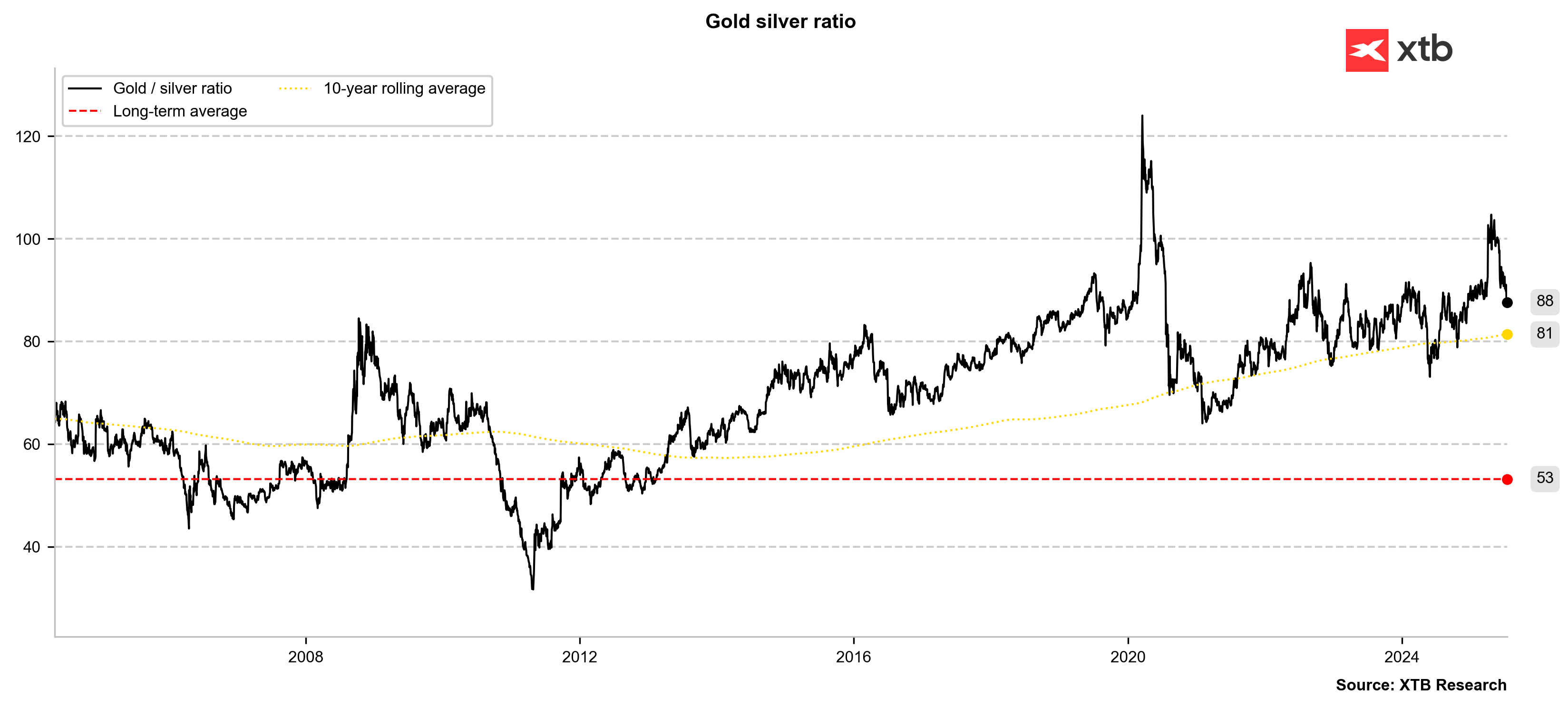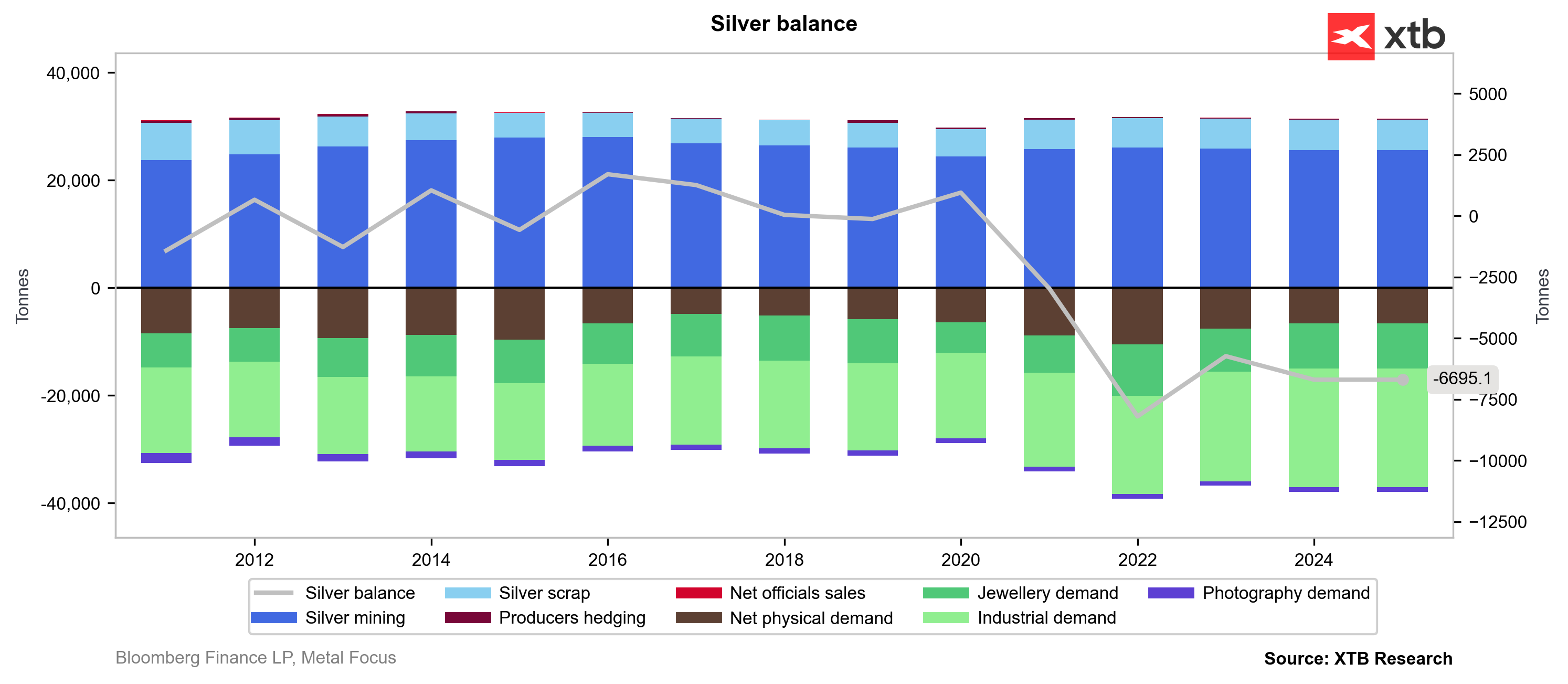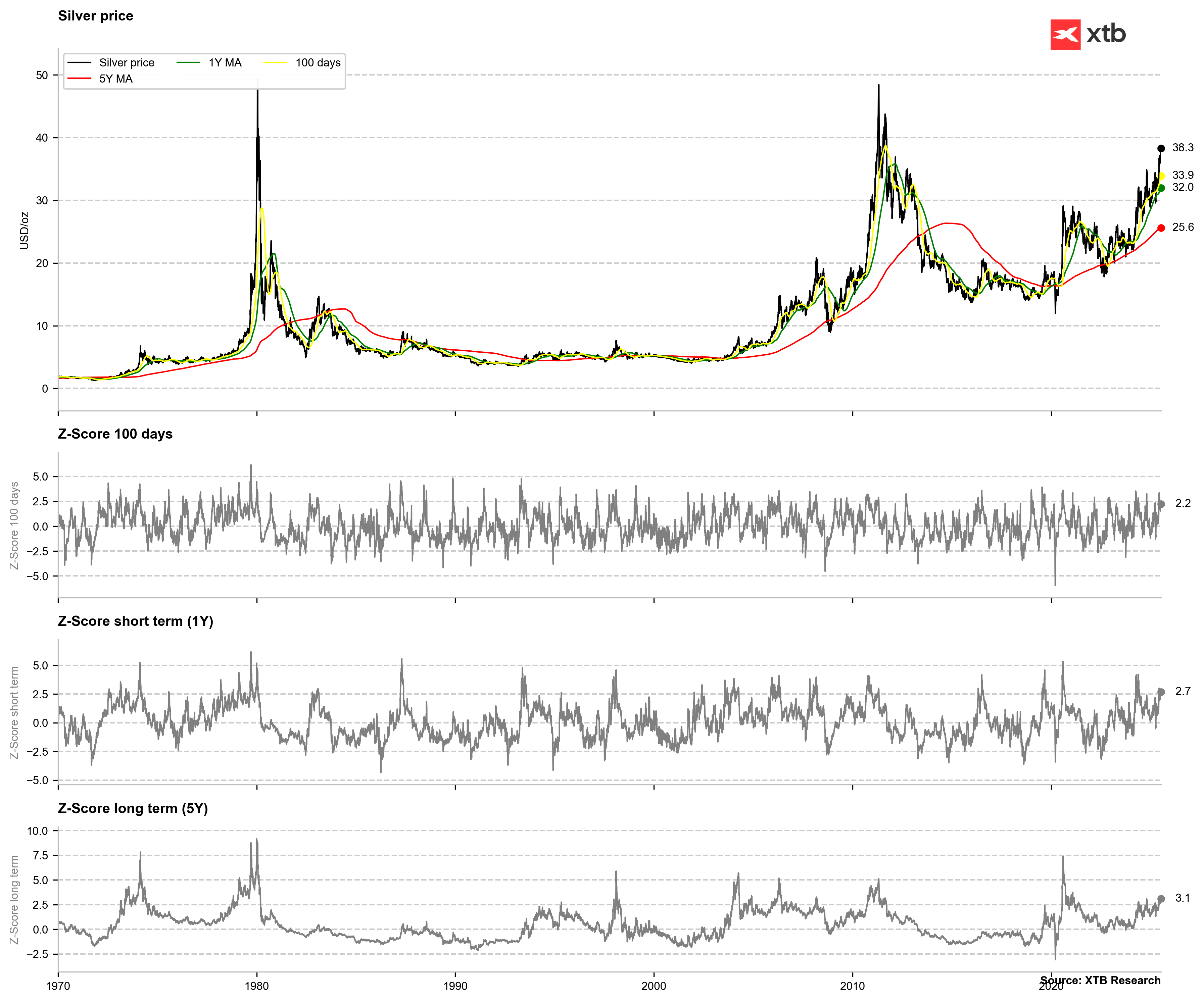Silver is one of the best-performing commodities of 2025, second only to a few others such as platinum. With a year-to-date return of 30%, silver has outpaced gold and, trading at $37–39 per ounce, is at its highest level since 2011. Historically, silver peaked near $50/oz in the early 1980s, meaning there is still room for further upside. In 2011, prices reached around $47/oz. Back then, the gold-to-silver ratio dipped below 40, while today it’s rapidly falling from around 100 to the current level of 88. The 10-year average for this ratio sits near 80 — implying a silver price of $41.25/oz with gold at around $3,300. The long-term average ratio of 53 would point to a potential silver price near $62/oz, assuming stable gold prices. Still, it’s worth noting that in recent years, the ratio has typically stayed higher, suggesting such elevated silver prices would likely require continued gains in gold.

Silver’s rally is driven in part by investor interest in cheaper, traditionally undervalued safe-haven assets. This has supported strong price gains for both silver and platinum. It’s important to highlight that these metals have a very different demand structure than gold — industrial demand plays a dominant role for silver and platinum. So when investor demand spikes, it intensifies already existing structural supply deficits. Silver has been in deficit for several years now, and notably, about 70% of silver is mined as a byproduct of other metals, making its supply dependent on prices of those commodities. With the threat of 50% tariffs on copper imports into the US — which may redirect supply from the Americas to Europe and Asia — new supply projects for silver look increasingly constrained.
What also stands out is the booming demand for silver from the tech sector. The energy transition, especially the growing use of silver in next-generation solar PV panels, is fueling long-term industrial demand growth.

Geopolitical tensions tend to have a greater direct impact on gold. At moments of peak market risk, gold sees the biggest benefit, while silver often rises secondarily. Only after global tensions ease can silver "spread its wings." Still, tariffs remain a key risk for silver. Major exporters like Canada and Mexico now face the prospect of significantly higher US tariff rates than just a few months ago.
Silver’s strength in 2025 and its climb to multi-year highs reflect a unique combination of high industrial demand, supply constraints, strong correlation with gold, and perception as a “cheaper” safe-haven. If these supply risks persist and demand continues rising, a return toward historical highs appears increasingly plausible.

Silver may be well on its way to testing its all-time highs. The price doesn’t yet appear extremely overvalued when looking at deviations from 1-year and 5-year moving averages. Source: Bloomberg Finance LP, XTB
Daily summary: Cryptocurrencies under pressure; US100 drives Wall Street
US100: Wall Street's stronghold of growth❓
BREAKING: EURUSD gains after US ISM data 💡
Chart of the day - OIL (03.11.2025)


